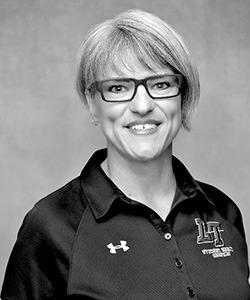“You can’t educate a child who isn’t healthy, and you can’t keep a child healthy who isn’t educated.” Former U.S. Surgeon General Joycelyn Elders spoke these words almost 30 years ago, and they still ring true today. In roles that go far beyond Band-Aids and ice packs, school nurses serve as a hub for community health, providing health education, ensuring immunization compliance, performing health screenings, and coordinating special care for students with medical conditions and disabilities.
Today’s school nurses navigate sensitive issues, from mental health crises to educating parents on the importance of vaccines like the HPV shot. And with the effects of COVID-19 still looming, school nurses are overwhelmed with continued disease surveillance and infection control, while trying to maintain the safe space of the nurse’s office for all students who need care.
This is especially true for students seeking mental health services. Students identify the school nurse’s office as a “safe zone” where they can discuss their stressors and mental health triggers. A 2019 survey from the National Association of School Nurses estimated that school nurses spend about one-third of their time addressing and triaging mental health issues. Today, that number is even higher — and it’s starting at younger ages. That’s why school nurses are so vital. They can identify students with mental and behavioral health risks and connect them with school-based and community health providers for intervention. In rural or underserved areas, outside mental health resources are often scarce, costly, and sometimes not covered by insurance, making school-based services even more crucial.
The health landscape has shifted, and our schools need the proper tools to effectively care for students. During a recent panel conversation hosted by Molina Healthcare of Texas, people were surprised to learn that not every school in Texas has a school nurse. In fact, more than 10% of the 254 counties in the state didn’t have a single school nurse in any public or charter school during the 2019-2020 school year.
Every school in Texas should have a full-time, registered nurse with the funding, resources, and support to care for students. Sadly, rural and economically-disadvantaged regions — including the Panhandle and Rio Grande Valley — are most likely to not have school nurses, often where they are needed most due to greater health disparities. In many instances, school nurses are often the first or only health professional students can routinely access.
This upcoming legislative session, we need our state lawmakers to allow available federal matching dollars to be used for school health services for Texas Medicaid students. This change would enable our state’s cash-strapped rural and underserved schools to implement more health resources, including the ability to hire nurses. It would not expand Medicaid, wouldn’t cost Texas any additional money, and would not require schools to provide additional health services — it merely provides the federal funding to do so.
Schools must address the physical and mental well-being of students before we can expect meaningful academic progress. Conversations like the one convened by Molina are an excellent step to ensuring state leaders are aware of the challenges school nurses face. These forums can shape an environment more conducive to caring for today’s students. And with that foundation, we can help ensure every student has the care they need to be healthy, safe, and motivated to learn.
Becca Harkleroad, RN, NCSN, is a Nationally Certified School Nurse who serves as the advocacy chair for the Texas School Nurses Organization and is the lead nurse for Lake Travis ISD.

